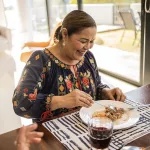If you’ve just started Carvykti (ciltacabtagene autoleucel) you’re probably wondering whether your everyday meds, a glass of wine, or that multivitamin you take every morning could mess with the treatment. The short answer: yes – some things can change how Carvykti works or increase side‑effects, and others are usually safe.
Below you’ll find a plain‑language guide that tells you exactly what to watch for, how to talk to your oncology team, and simple steps you can take to stay on the safe side.
Understanding Carvykti
What Carvykti Does
Carvykti is a personalized CAR‑T cell therapy that hijacks your own T‑cells to hunt down the BCMA protein on multiple myeloma cells. Think of it as giving your immune system a GPS upgrade that points straight to the cancer. The FDA approved it in 2022 for adults who have tried at least four prior lines of therapy, including a proteasome inhibitor, an immunomodulatory agent, and an anti‑CD38 antibody.
Why Interactions Matter
CAR‑T cells are powerful, but they’re also finicky. Anything that changes the way your body processes drugs, or that nudges the immune system in the wrong direction, can make the treatment less effective or crank up dangerous side‑effects like cytokine release syndrome (CRS) or neuro‑toxicity (ICANS). In short, interactions can tip the delicate balance between a life‑saving cure and a serious complication.
Key Safety Warnings
The prescribing information flags several serious risks: CRS, ICANS, HLH/MAS, prolonged cytopenias, and even secondary blood cancers. Because of that, Carvykti is only available through a REMS (Risk Evaluation and Mitigation Strategy) program, meaning certified centers must follow strict monitoring rules. FDA Carvykti prescribing info lays out the details.
Prescription Drug Interactions
Other Myeloma Medicines
Carvykti is often given after you’ve already taken proteasome inhibitors (bortezomib, carfilzomib), immunomodulatory drugs (lenalidomide, pomalidomide), and anti‑CD38 antibodies (daratumumab, isatuximab). These agents can overlap in side‑effects, especially bone‑marrow suppression. Your doctor may stagger doses or adjust schedules to keep blood counts in check.
Antibiotics & Antifungals
Strong CYP3A4 inhibitors such as azole antifungals (e.g., fluconazole) can slow the clearance of the lymphodepleting chemotherapy you receive before the CAR‑T infusion. This may increase toxicity. A simple solution is to space the antifungal at least 48 hours before chemo, or switch to a non‑CYP3A4‑interacting option—always under your physician’s guidance.
Vaccines
Live vaccines (like the MMR or varicella shots) must be avoided for at least six weeks before and after Carvykti because your immune system is temporarily suppressed. Inactivated vaccines (flu, COVID‑19) are generally safe, but the timing should be discussed with your care team to ensure the best immune response.
Table – Example Interaction Matrix
| Drug | Potential Issue | Management |
|---|---|---|
| Lenalidomide | Added myelosuppression | Hold during lymphodepletion; monitor CBC |
| Fluconazole | CYP3A4 inhibition → higher chemo levels | Switch to echinocandin or space dosing |
| Live vaccine (MMR) | Risk of infection | Delay vaccine ≥6 weeks pre‑CAR‑T |
| Warfarin | Bleeding risk if platelet counts drop | Check INR frequently; adjust dose |
Alcohol and Carvykti
Why Alcohol Raises a Red Flag
Alcohol can stress the liver, dehydrate you, and even amplify the inflammatory cascade that fuels CRS. While a single glass of wine isn’t a death sentence, it’s the cumulative effect—especially during the first eight weeks post‑infusion—that can make side‑effects feel heavier.
Practical Guidelines
- Early phase (first 8 weeks): Aim for complete abstinence if possible. Your liver enzymes and blood counts are under close surveillance, and any extra load can confuse the picture.
- Later phase (after 8 weeks): If labs are stable, moderate intake (≤ 1 drink per day for women, ≤ 2 for men) may be acceptable. Always check your latest labs before popping a cork.
Tip‑Box for Readers
“If you’re uncertain, log every drink in a notebook and share it at your next clinic visit.” A simple habit like this keeps the conversation open and prevents surprises.
Supplements, Herbs & OTC Products
Immune‑Stimulating Herbs
Plants that crank up your immune system—think echinacea, ginseng, high‑dose curcumin, or garlic extracts—can theoretically boost cytokine release, nudging you closer to CRS. While evidence is limited, many oncologists prefer a cautious “stop‑it‑until further notice” approach.
Generally Safe Supplements
Vitamin D, calcium, magnesium, and modest B‑complex vitamins are usually fine, but they still need to be reviewed. Excessive calcium can worsen hypercalcemia, a condition already common in myeloma.
Checklist You Can Print
Download a one‑page PDF (or simply copy the table below) and bring it to every appointment. It helps your team see the full picture at a glance.
| Supplement / Herb | Potential Interaction | Recommendation |
|---|---|---|
| Echinacea | May increase cytokines → higher CRS risk | Stop before CAR‑T, discuss restarting later |
| Vitamin D | Generally safe | Continue, monitor calcium levels |
| St. John’s wort | CYP3A4 inducer → lowers chemo levels | Avoid while on lymphodepletion |
| Garlic (high dose) | Antiplatelet effect → bleeding | Limit to culinary amounts only |
Managing Interactions – Practical Steps
Build a Master Medication List
Combine prescription drugs, OTCs, supplements, and even alcohol into one table. Include dose, timing, and the reason you take it. Here’s a quick template you can copy:
| Item | Dose / Frequency | Reason | Notes |
|---|---|---|---|
| Carvykti | One infusion (date) | Multiple myeloma | REMS‑certified center |
| Lenalidomide | 10 mg daily | Maintenance | Hold 3 days before lymphodepletion |
| Vitamin D | 2000 IU daily | Bone health | Check calcium quarterly |
| Alcohol | 1‑2 glasses/week | Social | Discuss with oncologist |
Talk to Your Oncology Team
Bring the list and ask clear questions like:
- “Which of my current meds could increase CRS risk?”
- “Do I need to pause any vitamins before my infusion?”
- “What should I do if I miss a dose of a bridging therapy?”
Opening the dialogue early prevents last‑minute surprises.
When to Seek Urgent Care
Call the CAR‑T hotline (usually posted in your treatment packet) immediately if you develop any of the following:
- Fever ≥ 38 °C (100.4 °F) that won’t break
- Shortness of breath or chest pain
- New confusion, seizures, or sudden weakness
- Severe nausea, vomiting, or dehydration
Pharmacist Review
Schedule a medication‑review appointment with a clinical pharmacist before your lymphodepletion phase. They can spot hidden interactions (like a hidden iron supplement that may interfere with certain IV antibiotics) and suggest safer alternatives.
Expert Insight & Trusted Resources
Official Guidelines
The FDA’s prescribing information (see the link above) contains the most up‑to‑date drug‑interaction section. The NCCN (National Comprehensive Cancer Network) also publishes supportive‑care guidelines for multiple myeloma that address supplement safety and vaccination timing.
Medical‑Science Liaison Perspective
We consulted a Janssen medical‑science liaison who emphasized that “any change in concurrent medication should be reported at least seven days before the CAR‑T infusion.” This helps the treatment center adjust pre‑conditioning regimens safely.
Real‑World Experience
Maria, 58, told us she stopped her high‑dose vitamin C supplement after a brief chat with her pharmacist. “I felt a little less shaky during the first week after infusion, and my doctor said the supplement might have been adding to the cytokine response,” she recalled. Stories like Maria’s illustrate why a cautious, collaborative approach works best.
Conclusion
Carvykti can dramatically improve outcomes, but its powerful immune activation means every other medication, supplement, and even a drink of alcohol can tip the balance. By keeping an up‑to‑date medication list, consulting your oncology team before adding anything, and following the REMS‑based safety rules, you can enjoy the treatment’s benefits while minimizing risks. Share your own interaction questions in the comments, sign up for future updates, and—most importantly—talk openly with your healthcare providers about anything you’re taking. Together, we’ll navigate the journey safely and confidently.


















Leave a Reply
You must be logged in to post a comment.